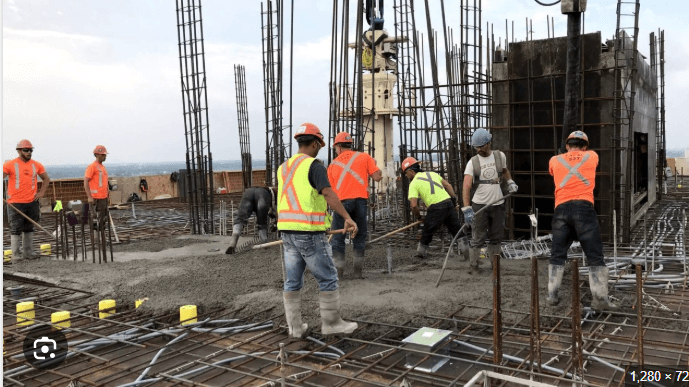The Future of Construction: Skilled Workers Leading the Way

The construction industry has always been the backbone of civilization, building the homes we live in, the offices we work in, and the infrastructure that connects us. Yet as technology reshapes every corner of our lives, one truth remains constant: skilled workers are still the heartbeat of construction. They bring blueprints to life, solve problems on the spot, and create structures that stand the test of time.
As we look to the future of construction, it’s clear that skilled workers will play an even more central role. While digital tools, robotics, and artificial intelligence (AI) will revolutionize how we plan and manage projects, it’s the people on the ground—craftspeople, technicians, supervisors—who will ensure that these innovations translate into real-world success.
In this article, we’ll explore why skilled workers are crucial to the future of construction, how their roles are evolving, and what businesses can do to support and nurture this invaluable workforce.
The Foundation of Construction: Skilled Workers at the Core
Even seemingly simple elements like engineering bricks known for their strength, low water absorption, and durability depend on expert handling to ensure structural integrity and long-lasting performance.
Construction is one of the oldest professions in human history. From the pyramids of Egypt to modern skyscrapers, it’s skilled labor—masons, carpenters, welders, electricians, and more—that makes the vision of architects and engineers a reality.
Despite the rise of new technologies, the industry still relies heavily on these skilled trades. The precision and craftsmanship required on a construction site can’t be replicated by machines alone. Skilled workers bring an intuitive understanding of materials and techniques, adapting on the fly to solve challenges that no algorithm can predict.
But today’s skilled workers face a changing landscape. They’re expected to work faster, safer, and more collaboratively than ever before. The good news? Experienced workers are fully prepared to meet the challenge.
Why Skilled Workers Are More Important Than Ever
As construction projects become more complex and customer expectations grow, the demand for skilled labor is only increasing. Here’s why skilled workers are at the forefront of this evolution:
1. Complexity of Modern Projects
Modern construction projects involve advanced materials, sophisticated designs, and integrated systems that require deep expertise. Skilled workers are the link between high-tech designs and the final structure. Their ability to read complex plans and adjust to real-world challenges is essential for project success.
2. Quality and Safety Standards
Safety is a top priority on any site, and skilled workers know how to work within strict safety guidelines. Their knowledge and experience help prevent accidents, protect coworkers, and ensure that projects meet regulatory standards.
3. Adaptability in the Face of Change
Construction sites are dynamic environments. Skilled workers have the problem-solving skills and experience to adapt and keep projects moving forward.
4. Leadership and Mentorship
Many skilled workers take on informal leadership roles, mentoring younger workers and maintaining a positive work environment. They pass down their expertise, ensuring that construction knowledge doesn’t disappear with retiring generations.
How Technology is Changing the Role of Skilled Workers
It’s impossible to talk about the future of construction without mentioning technology. Drones, AI-powered project management, and 3D printing are just a few examples of innovations transforming how we build.
Far from replacing skilled workers, technology is empowering them. Here’s how:
1. Augmented Reality (AR) and Virtual Reality (VR)
AR and VR are giving skilled workers new ways to visualize projects before they’re built. Workers can see digital overlays of plans on real-world job sites, helping them identify issues and improve accuracy.
2. Digital Collaboration Tools
Platforms like Building Information Modeling (BIM) allow workers to collaborate with architects and engineers in real time. Skilled workers can give immediate feedback from the job site, reducing rework and delays.
3. Robotics and Automation
While robots handle repetitive tasks like bricklaying or welding, skilled workers oversee and troubleshoot these machines. This frees them to focus on tasks that require creativity, precision, and judgment.
4. Wearable Safety Tech
Smart helmets, connected vests, and sensors can alert workers to hazards and reduce injuries. Skilled workers who understand how to integrate these tools are better equipped to work safely and efficiently.
Challenges Facing Skilled Workers
Despite their critical role, skilled workers face challenges that threaten to hold back the entire industry:
1. Labor Shortages
Many countries are experiencing a shortage of skilled tradespeople as older workers retire and fewer young people enter the trades. This shortage makes it harder to staff projects and drives up costs.
2. Outdated Training Models
Traditional training and apprenticeship programs haven’t kept pace with modern construction techniques. Workers need access to ongoing training to stay ahead of industry changes.
3. Lack of Recognition
For too long, the skilled trades have been undervalued compared to other professions. This stigma discourages young people from pursuing careers in construction, despite the high pay and job security these roles can offer.
4. Physical and Mental Health Risks
Construction work is demanding, and skilled workers are at risk for injuries, fatigue, and stress. Companies must prioritize both physical and mental well-being to retain top talent.
The Path Forward: Investing in Skilled Workers
The future of construction depends on how we support and invest in skilled workers. Here’s what the industry needs to focus on:
1. Modern Training and Apprenticeships
Investing in training that combines traditional skills with new technologies is critical. Programs should teach not only how to use tools and materials, but also how to work with digital systems and automated equipment.
2. Promoting the Trades as a Career
To draw in the next generation of skilled workers, we must shift how the trades are perceived. Outreach in schools, better marketing of construction careers, and celebrating the craftsmanship of skilled workers will go a long way.
3. Creating a Culture of Safety and Respect
Construction sites should be places where workers feel valued and safe. This means providing top-notch safety equipment, mental health resources, and a culture of respect for all workers.
4. Embracing Diversity and Inclusion
The skilled trades have historically lacked diversity, but the future depends on bringing in new perspectives and talents. Supporting women, minorities, and underrepresented groups in the trades is key to filling workforce gaps and building better projects.
Why Skilled Workers Will Always Lead the Way
In a world of automation and AI, one thing is clear: skilled workers will continue to lead the way in construction. No robot can replicate the judgment, creativity, and experience of a seasoned tradesperson. Skilled workers are the ones who turn vision into reality—laying brick by brick, beam by beam, to create the structures that shape our communities.
As technology evolves, it will complement and elevate the work of skilled professionals, not replace it. The future of construction belongs to those who can combine the best of both worlds: human skill and high-tech tools working together to build a stronger, safer, and more sustainable world.
Final Thoughts
The construction industry is at a crossroads. It faces challenges from labor shortages to climate change, but it also has incredible opportunities ahead. Skilled workers are the key to seizing these opportunities and overcoming obstacles.
By valuing skilled labor, investing in modern training, and harnessing the power of technology, we can create a construction industry that’s ready for whatever the future holds. It’s a future where skilled workers aren’t just surviving—they’re thriving, leading the way toward a new era of innovation, quality, and pride in craftsmanship.
As we move forward, let’s remember: behind every crane, every beam, and every project milestone, it’s the hands and minds of skilled workers that truly build the future.




